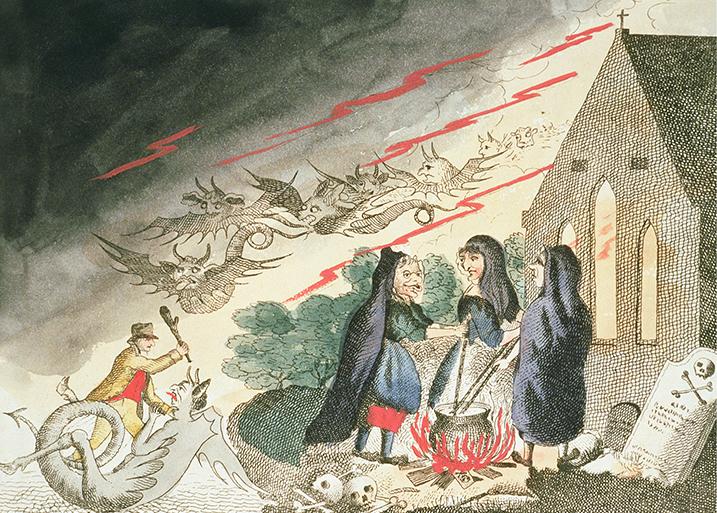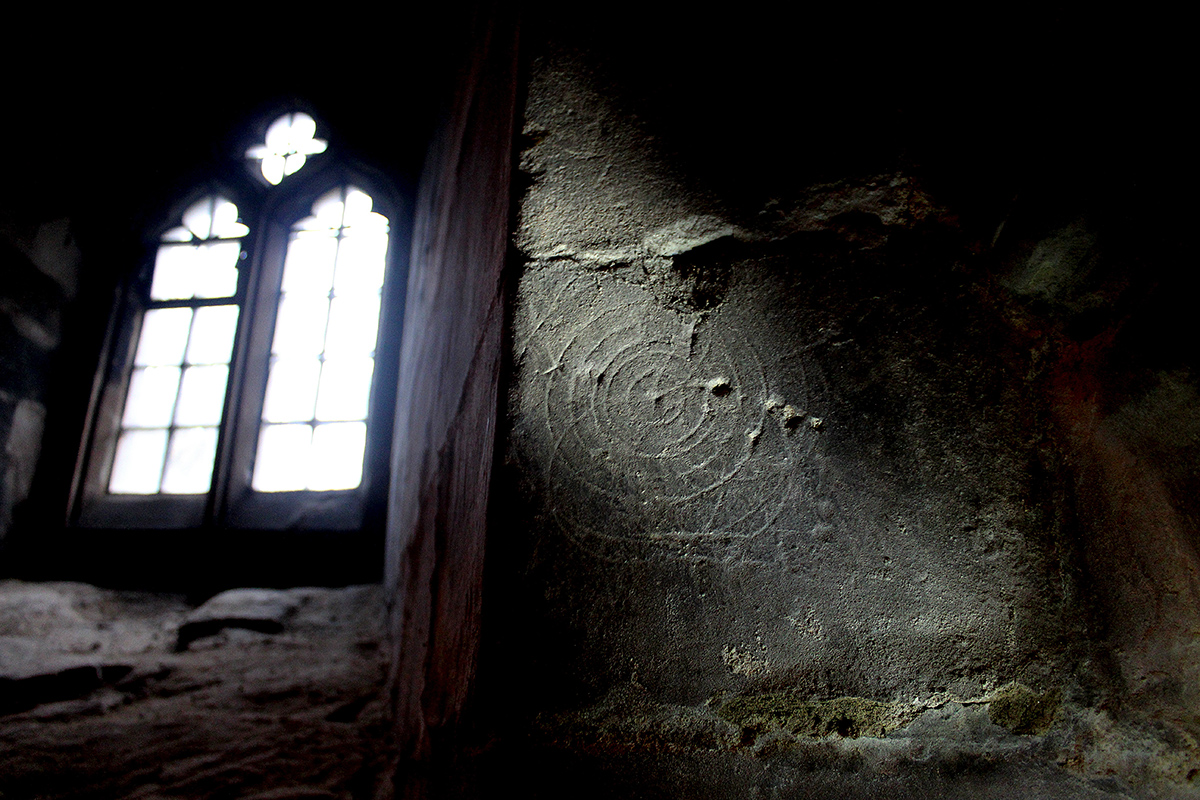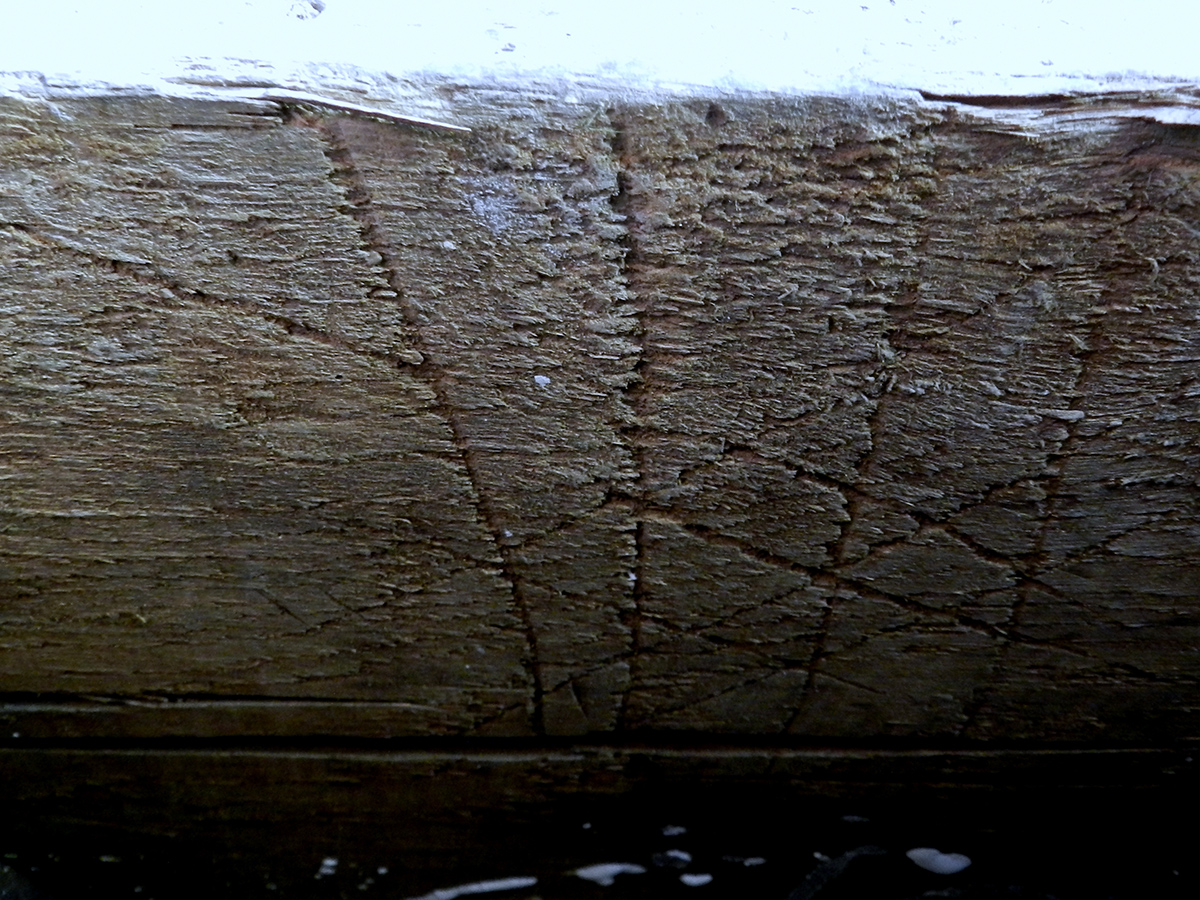This wonderful Cornish workshop and museum is dedicated to the legacy of studio pottery trailblazer Bernard Leach
The Ancient Symbols Once Used To Ward Away Witches
The Ancient Symbols Once Used To Ward Away Witches
26 Oct 2020
It’s almost Halloween – time to dip into the past and explore the ways we once protected hearth and home from demons. Our expert, archaeologist James Wright, leads the way

‘THE DEVIL… WILL COME AND PIERCE THROUGH WHATSOEVER HOUSE OR CHURCH, THOUGH ALL ORDINARY PASSAGES BE CLOSED, BY WHATSOEVER OPENING THE AIR MAY ENTER IN AT’
King James VI of Scotland, Daemonologie, 1597
 An image from The Wonderful Discoveries of the Witchcrafts of Margaret and Phillip Flower, printed in London, 1618
An image from The Wonderful Discoveries of the Witchcrafts of Margaret and Phillip Flower, printed in London, 1618
1. SPOOKED BY SPIRITS
In a curious passage from his 1597 witch-hunting manual, James VI of Scotland (later James I of England) expressed the widespread fear in early modern Europe that the Devil could take possession of a building.
The reality of supernatural evil was almost universally acknowledged during the 16th and 17th centuries. Demons, evil spirits and witches were genuinely believed to be stalking the land, intent on wickedness.
This turbulent time witnessed social, political, economic and religious upheaval. So difficult were the problems that people began to look towards external, supernatural factors as being responsible for their troubles. Witch trials became distressingly common, with the alleged malefactors accused of using black magic in a variety of perceived crimes. Statistics from the law courts show that the majority of those accused were marginalised women, living on the edge of society.
An extension of these fears was that folk from all sectors of society sought to ward away the threat of evil from their property. Through careful archaeological survey, researchers have been able to find traces of this ritual protection in historic buildings.

Medieval graffito of a pentangle from St James the Great Church, Aslackby, Lincolnshire
2. SIGNS AND SYMBOLS
One of the ways in which owners, occupants and visitors to buildings sought to ward off evil was by carving protective symbols, as graffiti, into the structure’s fabric. In doing so, they sometimes turned to ancient folk beliefs and pseudo-theology for inspiration.
The notion that the five-pointed star, or pentangle, had protective powers stretched back into the medieval period. In Christian numerology the number five represented the five wounds of Christ. The 14th-century poem Sir Gawain and the Green Knight contains a passage in which the eponymous hero dons gear that depicts pentangles, in order to offer spiritual protection against the supernatural Green Knight.
The endless-line design of the pentangle may have been linked to a folk belief that demons were not especially bright creatures. It was thought that a demon would always follow a line to find out where it went; by creating a line with no end an evil spirit could be trapped, spinning on the walls for all time.
It's not just pentangles that are found scratched onto the walls – chequerboards, mesh patterns, peltas (a type of knotwork design) and circles were also co-opted in the fight against evil.

Ritual protection marks adjacent to a window at St Mary’s, Warwick, Warwickshire
3. PROTECTING THE PORTALS
James VI gave us a pointer as to where we might start to look for physical clues relating to ritual protection marks in historic buildings. He noted that evil spirits entered structures 'by whatsoever opening the air may enter in at'. At a time when the majority of buildings were timber-framed, draughts were common and it was believed that the spirits travelled into buildings on this free-flowing air. Doors, windows and fireplaces were considered particularly vulnerable portals.
Surveys of historic buildings have turned up countless examples of ritual protection marks. They appear in virtually every type of structure, including churches, castles, cottages, mills and barns. When statistically mapping these marks, it is usual to find them in clusters close to the portals, indicating that real concern about the vulnerability of these liminal spaces. Equally, dark, dangerous or rarely used places, such as attics and staircases, also yield evidence for the markings.
In churches, ritual protection marks can sometimes be positively dated to the medieval period. Pre-existing medieval inscriptions were often covered by limewash during the Reformation, which kept them preserved intact beneath. The context of the medieval graffiti is therefore sealed by the post-medieval limewash, enabling us to be able to date it. In a similar way, later building work can block in older graffiti. If we know the date of the two different phases, when the older graffiti is revealed during conservation or remodelling work, we can get an idea of the time that it was originally created through the archaeological relationship of the two phases.

Burn mark on a timber at Gainsborough Old Hall, Lincolnshire
4. BURNING ISSUES
Alongside the inscribed marks, mysterious-looking tear-shaped burn marks can sometimes be found on exposed timbers. At one time it was thought these were the result of carelessly unattended candles or tapers. But experimental archaeology has proven that only a very meticulous process can lead to the creation of such marks. This involved holding the taper, very still, at a 45-degree angle for up to 20 minutes – suggestive of deliberate human behaviour.
Burn marks are often found in association with other ritual protection marks. They may also be linked to protection against lightning and conflagration, or may be related to prayer, purification and healing. One of the problems of interpreting such marks is that there are few contemporary written sources explaining their functions.
Consequently, we have used exclusively archaeological techniques to record, map and understand how and why they came to be made. This is done by shining the raking light of a torch over the walls, photographing the findings and then carefully recording the results.

Marks incised with a carpenter’s rase knife during the early 17th century at Knole, Kent
5. REDISCOVERING THE RITUALS
During the 18th and 19th centuries, the secularised processes of scientific enlightenment and the Industrial Revolution led to a decline in ritual protection marks. Their purposes were gradually forgotten, but it has become apparent to archaeologists that very few medieval or early modern buildings are lacking in such features. As they have been rediscovered, curators of historic buildings have brought them to the attention of visitors – and they are proving to be very popular.
One such discovery is the scratched and burned ritual protection marks on a beam beneath the floor of the King’s Tower at Knole in Kent. The marks were made using a carpenter’s rase knife during the period of construction. Research has shown that the timber had been felled in the winter of 1605 and laid in the building the following year. Intriguingly, the building was being remodelled as royal accommodation for James I – the witch-hunting king – at a time when his life had been threatened from the Gunpowder Plot. The latter was widely blamed on Catholics in league with the Devil – perhaps the carpenters at Knole wished to ensure the king’s future ritual protection from evil?
JAMES'S TOP TIPS
There are some excellent websites on this subject, including Medieval Graffiti,Raking Light and English Medieval Graffiti. There is also an article and lecture on the ritual protection marks at Knole freely available via Gresham College.
Good reads
Medieval Graffiti: The Lost Voices of England’s Churches by Matthew Champion
Magical House Protection: The Archaeology of Counter-Witchcraft by Brian Hoggard
Physical Evidence for Ritual Acts, Sorcery and Witchcraft in Christian Britain: A Feeling for Magic edited by Ronald Hutton
Where to visit
Ritual protection marks are visible in a large number of historic properties open to the public. Among those are Berry Pomeroy Castle (Devon), St Albans Cathedral (Hertfordshire), Gainsborough Old Hall (Lincolnshire), Little Moreton Hall (Cheshire) and York Minster (North Yorkshire). Be sure to take a torch with you – historic graffiti can be difficult to see without casting the shadows created by a raking light.
OUR EXPERT'S STORY
James Wright is a buildings archaeologist who runs the Triskele Heritage consultancy. He has two decades of professional experience of ferreting around in people’s cellars, hunting through their attics and digging up their gardens. He hopes to find meaningful truths about how ordinary and extraordinary folk lived their lives in the medieval and early modern periods.
James has previously published books looking at the archaeology of medieval castles and great houses, as well as numerous articles on historic graffiti. He is currently working on a new book, investigating, interrogating and explaining common myths relating to medieval buildings.
Among his lectures for The Arts Society are How to Deflect Your Demons – the ritual protection of hearth and home and Historic Graffiti – the hopes, fears and desires of a nation.
James led the historic building survey at Knole for many years and was an integral member of the team that won the 2018 Best Archaeological Project at the British Archaeological Awards.
IF YOU ENJOYED THIS INSTANT EXPERT STORY...
Why not forward this on to a friend who you think would enjoy it too?
Stay in touch with The Arts Society! Head over to The Arts Society Connected to join discussions, read blog posts and watch Lectures at Home – a series of films by Arts Society Accredited Lecturers.
About the Author
James Wright
Article Tags
JOIN OUR MAILING LIST
Become an instant expert!
Find out more about the arts by becoming a Supporter of The Arts Society.
For just £20 a year you will receive invitations to exclusive member events and courses, special offers and concessions, our regular newsletter and our beautiful arts magazine, full of news, views, events and artist profiles.
FIND YOUR NEAREST SOCIETY
MORE FEATURES
Ever wanted to write a crime novel? As Britain’s annual crime writing festival opens, we uncover some top leads
It’s just 10 days until the Summer Olympic Games open in Paris. To mark the moment, Simon Inglis reveals how art and design play a key part in this, the world’s most spectacular multi-sport competition



